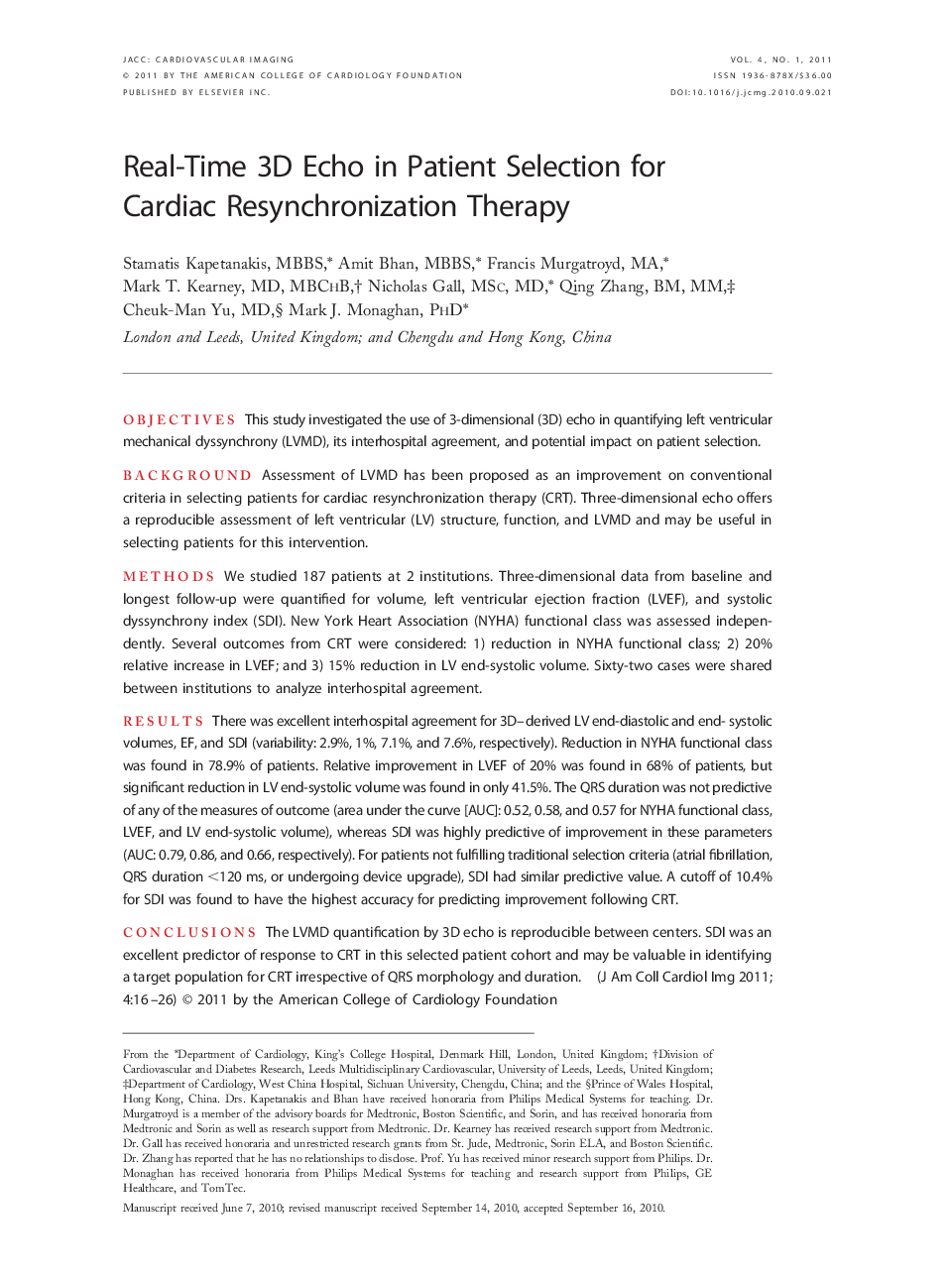| کد مقاله | کد نشریه | سال انتشار | مقاله انگلیسی | نسخه تمام متن |
|---|---|---|---|---|
| 2938398 | 1176937 | 2011 | 11 صفحه PDF | دانلود رایگان |

ObjectivesThis study investigated the use of 3-dimensional (3D) echo in quantifying left ventricular mechanical dyssynchrony (LVMD), its interhospital agreement, and potential impact on patient selection.BackgroundAssessment of LVMD has been proposed as an improvement on conventional criteria in selecting patients for cardiac resynchronization therapy (CRT). Three-dimensional echo offers a reproducible assessment of left ventricular (LV) structure, function, and LVMD and may be useful in selecting patients for this intervention.MethodsWe studied 187 patients at 2 institutions. Three-dimensional data from baseline and longest follow-up were quantified for volume, left ventricular ejection fraction (LVEF), and systolic dyssynchrony index (SDI). New York Heart Association (NYHA) functional class was assessed independently. Several outcomes from CRT were considered: 1) reduction in NYHA functional class; 2) 20% relative increase in LVEF; and 3) 15% reduction in LV end-systolic volume. Sixty-two cases were shared between institutions to analyze interhospital agreement.ResultsThere was excellent interhospital agreement for 3D–derived LV end-diastolic and end- systolic volumes, EF, and SDI (variability: 2.9%, 1%, 7.1%, and 7.6%, respectively). Reduction in NYHA functional class was found in 78.9% of patients. Relative improvement in LVEF of 20% was found in 68% of patients, but significant reduction in LV end-systolic volume was found in only 41.5%. The QRS duration was not predictive of any of the measures of outcome (area under the curve [AUC]: 0.52, 0.58, and 0.57 for NYHA functional class, LVEF, and LV end-systolic volume), whereas SDI was highly predictive of improvement in these parameters (AUC: 0.79, 0.86, and 0.66, respectively). For patients not fulfilling traditional selection criteria (atrial fibrillation, QRS duration <120 ms, or undergoing device upgrade), SDI had similar predictive value. A cutoff of 10.4% for SDI was found to have the highest accuracy for predicting improvement following CRT.ConclusionsThe LVMD quantification by 3D echo is reproducible between centers. SDI was an excellent predictor of response to CRT in this selected patient cohort and may be valuable in identifying a target population for CRT irrespective of QRS morphology and duration.
Journal: JACC: Cardiovascular Imaging - Volume 4, Issue 1, January 2011, Pages 16–26